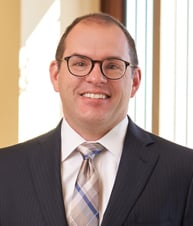Recentive Analytics, Inc. v. Fox Corp., et al., No. 2023-2437 (Fed. Cir. (D. Del.) Apr. 18, 2025). Opinion by Dyk, joined by Prost and Goldberg (sitting by designation).
Recentive sued Fox for infringing four patents that claim the use of machine learning for generating network maps and schedules for television broadcasts and live events. Fox moved to dismiss for failure to state a claim, arguing that the patents are directed to ineligible subject matter under 35 U.S.C. § 101.
The district court granted the motion, concluding that the patents are ineligible under the two-step Alice inquiry. First, the court found that the claims are “directed to the abstract ideas of producing network maps and event schedules … using known generic mathematical techniques.” The court then found that the claims are not directed to an “inventive concept” that would “amount to significantly more than a patent upon the ineligible concept itself” because the machine learning limitations are no more than “broad, functionally described, well-known techniques.” Recentive appealed.
The Federal Circuit affirmed. At the outset, the court noted that the case presented a question of first impression: “whether claims that do no more than apply established methods of machine learning to a new data environment are patent eligible.” The court held that they are not.
Addressing Alice step one, the Federal Circuit said it was “clear that [the claims] are directed to ineligible, abstract subject matter.” The patents “rely on the use of generic machine learning technology in carrying out the claimed methods for generating event schedules and network maps,” and the “machine learning technology described in the patents is conventional.” Also, “the claims do not delineate steps through which the machine learning technology achieves an improvement.”
The court explained that “the only thing the claims disclose about the use of machine learning is that machine learning is used in a new environment” (involving event scheduling and creating network maps). But applying machine learning to a new field of use does not make the patents eligible for patenting. The Federal Circuit has “long recognized that an abstract idea does not become nonabstract by limiting the invention to a particular field of use or technological environment.”
Turning to Alice step two, the Federal Circuit saw nothing in the claims that would transform the patents into something “significantly more” than the abstract idea of generating event schedules and network maps by applying machine learning. Thus, the Federal Circuit upheld the district court’s dismissal.
As a final comment, the Federal Circuit noted that “machine learning is a burgeoning and increasingly important field and may lead to patent-eligible improvements in technology,” and so the court limited the scope of its holding. The court said: “Today, we hold only that patents that do no more than claim the application of generic machine learning to new data environments, without disclosing improvements to the machine learning models to be applied, are patent ineligible under § 101.”
Sage Products, LLC v. Stewart, Nos. 2023-1603, -1604 (Fed. Cir. (PTAB) Apr. 15, 2025). Opinion by Stark, joined by Reyna and Cunningham.
Sage Products owns two patents directed to a “sterilized chlorhexidine product” for topical disinfection. Becton Dickinson filed IPR petitions raising three grounds of unpatentability for the challenged claims: anticipation by the “PAR” reference (published in the UK), obviousness over PAR given the knowledge of a skilled artisan, and obviousness over PAR in view of another reference.
The Patent Trial and Appeal Board concluded that all challenged claims were unpatentable on all three grounds. Sage appealed.
The Federal Circuit affirmed, rejecting each of Sage’s three main arguments on appeal.
First, the court held that substantial evidence supported the Board’s finding that a skilled artisan would have understood PAR’s discussion of “sterile” products and compositions to satisfy the “sterilized” limitations in the challenged claims. The evidence supported the Board’s finding that skilled artisans, who have “four years of experience with sterilization processes for medical products,” would have been familiar “with the regulatory regimes that set the conditions under which the products or processes they work with may be used.” Thus, they would have known about “the differing regulatory requirements in the United States and the UK” where PAR was published.
Second, the court held that substantial evidence supported the Board’s finding that PAR disclosed all elements of each of the challenged claims, including the “sterilized colorant” and “sterility assurance level” limitations in certain dependent claims. Here too, substantial evidence supported the Board’s findings with respect to the disputed claim limitations.
Third, Sage faulted the Board for committing what it contends were procedural errors in its anticipation analysis. The Federal Circuit disagreed. For example, there was “nothing improper in the Board relying on evidence outside of the PAR” reference, like expert testimony, “to make findings as to what the skilled artisan would understand the PAR to be disclosing.” In the end, “much of what Sage complain[ed] about simply repeat[ed], in procedural garb, the same factual challenge” raised in its merits arguments.
The Federal Circuit accordingly affirmed the Board’s decision based on anticipation by PAR, making it unnecessary to reach the Board’s obviousness determinations.

